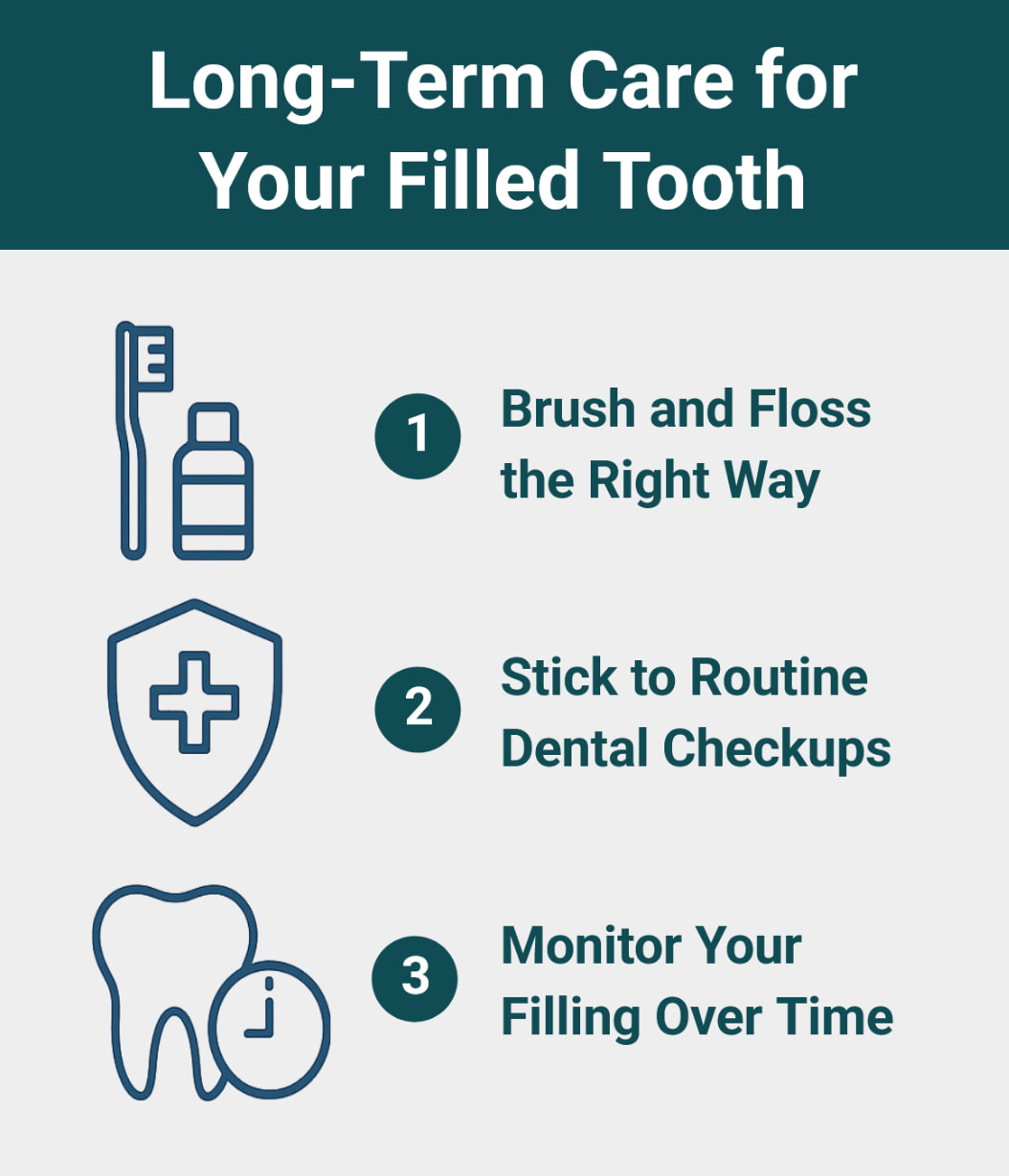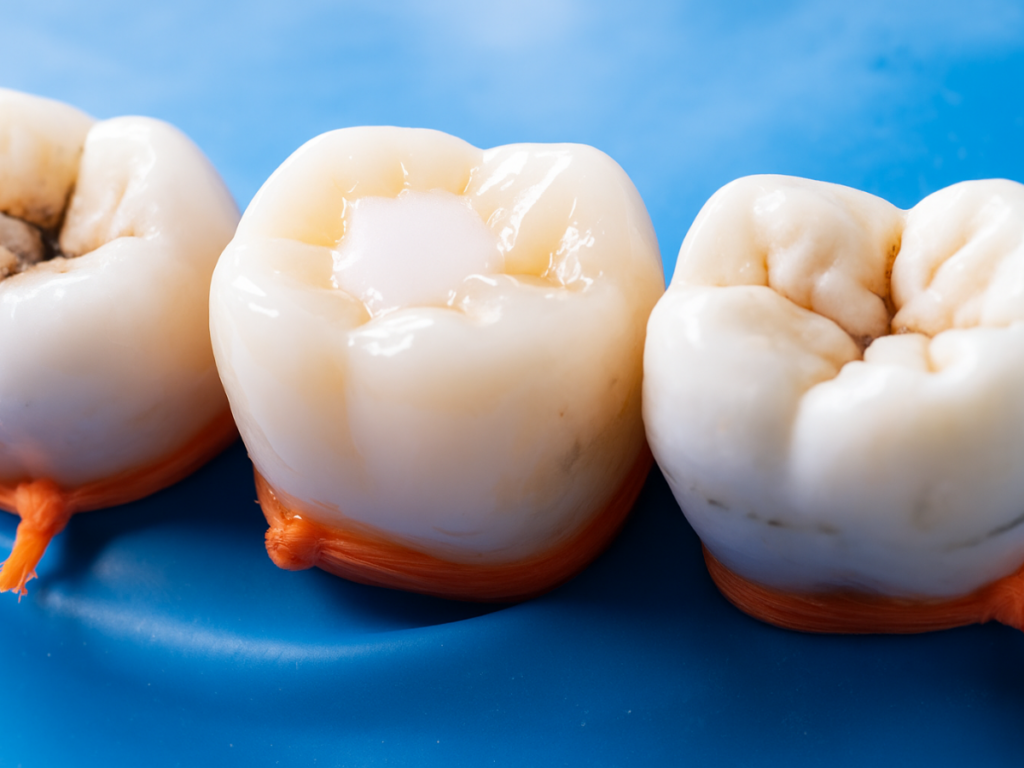A tooth filling is a straightforward procedure, but the recovery process still deserves attention. What you do after your appointment can affect how quickly you feel back to normal—and how long your filling holds up over time.
Mild sensitivity, changes in bite, or temporary discomfort are all common. But knowing what’s normal (and what’s not) helps you navigate the healing period with less worry. Good aftercare also supports the longevity of your filling by preventing cracks, wear, or decay around the restoration.
At Elizabeth L. Wakim, DDS, we make sure every patient leaves with the tools and knowledge they need to care for their smile. If you’re recovering from a recent filling or preparing for one soon, this guide will walk you through the key things to know—clearly and confidently.
What to Expect Right After Your Filling
Some sensitivity is normal after a filling—especially to cold, heat, or pressure. In fact, over 40% of adults report experiencing tooth sensitivity within a year. This discomfort usually lasts just a few days, but it can take up to two weeks to fully settle depending on the type of filling and how deep the cavity was.
You might also notice:
- A slightly altered bite (which can be adjusted at a follow-up)
- Numbness for a few hours after the procedure
- Mild soreness at the injection site
These symptoms are usually temporary and manageable. But if pain increases or your bite feels uneven after the numbness wears off, contact your dentist for a quick check.
Dos and Don’ts After a Tooth Filling
What to Do After a Tooth Filling
- Wait for the numbness to fade before eating: This helps prevent accidentally biting your tongue or cheeks while your mouth is still numb from the dental filling procedure.
- Chew on the opposite side: Especially during your first few meals, avoiding pressure on the treated tooth gives the area time to settle and heal.
- Stick to soft foods: Mashed potatoes, scrambled eggs, yogurt, and smoothies are easy on the new filling and minimize discomfort.
- Maintain good oral hygiene: Continue brushing with a soft-bristled toothbrush, being extra gentle around the filling to protect your gums.
- Monitor any sensitivity: It’s normal to feel mild discomfort or sensitivity to hot and cold foods. If it lingers beyond two weeks, check in with your dental office. but let your dental office know if the pain doesn’t subside within two weeks.
What Not to Do After a Tooth Filling
- Avoid hard, sticky, or crunchy foods: Caramel, popcorn, and tough meats can put pressure on your new filling—especially if the dental cavity was deep.
- Skip hot and cold beverages: Until sensitivity settles, it’s best to avoid hot soup, citrus juices, or icy drinks to manage discomfort.
- Don’t chew directly on the treated tooth: Give the filling time to fully harden, particularly for composite fillings that need a few hours to cure.
- Avoid acidic and sugary foods: Citrus, soda, and candy can irritate the affected area and weaken enamel while your mouth heals.
- Stay away from tobacco products and alcohol: Chewing tobacco and acidic drinks like sports drinks can slow healing and raise your risk of gum disease or oral cancer.
- Don’t skip brushing or flossing: Good oral hygiene is still essential—even if you’re experiencing mild discomfort. Just go gently around the treated area.
Managing Tooth Sensitivity or Discomfort
It’s common to experience some mild discomfort or sensitivity after a dental filling—especially when eating hot and cold foods or biting down.
Typically, this sensitivity should improve within a few days to two weeks, depending on:
- The size and depth of the cavity – Deeper dental cavities that are closer to the nerve may take longer to settle.
- The type of filling material used – Composite fillings can be more sensitive to temperature at first compared to amalgam.
- Your bite alignment – If the new filling is slightly too high, it may cause pressure and prolong discomfort until adjusted.
Long-Term Care for Your Filled Tooth
A dental filling restores your tooth, but long-term success depends on how well you care for it. With the right habits, your filling can last for many years—while also helping prevent future tooth decay or gum disease. On average, adults between ages 50 and 64 have around 7.5 filled teeth, compared to 4.8 in younger adults aged 20 to 34, highlighting how important ongoing care becomes as we age.

Brush and Floss the Right Way
Good oral hygiene is essential aftercare for tooth filling. Use a soft-bristled toothbrush and fluoride toothpaste to clean thoroughly around the treated tooth without irritating it. Don’t skip flossing—just be gentle near the filling area to avoid dislodging it, especially in the first few days.
Stick to Routine Dental Checkups
Your dentist can spot early signs of wear or damage to the filling and check for any new dental cavity formation nearby. Regular cleanings also reduce the risk of future issues—like tooth pain or visible holes—from plaque buildup or undetected tooth decay.
Monitor Your Filling Over Time
Most cavity fillings are durable, but they don’t last forever. Over time, a filling may loosen, chip, or develop gaps—especially if you grind your teeth, chew hard foods, or skip routine care. In some cases, your dentist may recommend replacing the filling or upgrading to a crown for better protection.
Warning Signs to Watch For
Most patients experience only mild discomfort after a filling—but it’s important to know when symptoms go beyond normal dental filling aftercare. Spotting early warning signs can help protect your oral health and prevent future complications.
Here’s what to watch for:
- Persistent or sharp tooth pain: Some mild discomfort is expected, but lasting pain may signal a bite imbalance or lingering tooth decay near the treated area.
- Visible cracks or movement in the filling: If the filling looks uneven or feels loose—especially in a front tooth—it may have shifted or chipped, leaving the cavity vulnerable.
- Increasing sensitivity to hot, cold, or acidic foods” Some sensitivity is normal, but if it worsens over time instead of fading, it’s worth a follow-up.
- Swelling or gum irritation around the affected area: Redness, puffiness, or discomfort around the gumline could indicate infection or improper placement.
- Difficulty chewing or speaking normally: Trouble with basic functions like chewing hard foods or speaking clearly might suggest the filling is too high or needs adjustment.
If you notice any of these changes, don’t wait. Early intervention is key to preventing additional issues and preserving strong, healthy teeth. You can also explore our restorative dentistry options to learn how we help repair damage and support your long-term oral health.
Still Have Questions? Ask Your Dentist
Every filling is a step toward better oral health—but long-term success comes from how you care for it. By following smart aftercare practices and keeping up with your dental visits, you can avoid future decay and keep your restored tooth strong for years.
If you’re experiencing sensitivity, discomfort, or have questions about your recovery, our team is here to help. Contact our office at (724) 558-8222 or use our contact form to schedule an appointment. We’ll make sure your filling—and your smile—stays in excellent shape.

